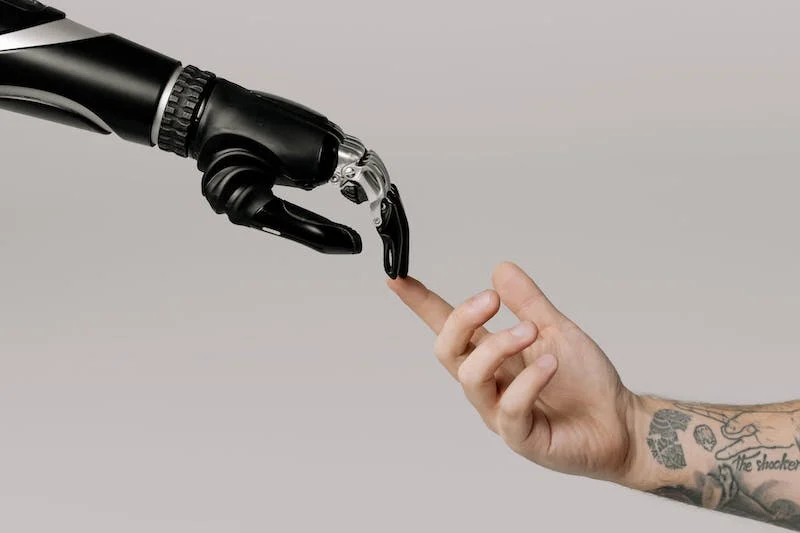Contents
Artificial Intelligence (AI) has long been associated with automating routine tasks, responding to commands, and enhancing data-driven decision-making. But a new chapter is unfolding. Businesses are no longer satisfied with rule-based AI that simply reacts—they are investing in systems that can plan, decide, and act autonomously. This shift toward agentic AI or autonomous AI systems is rapidly becoming a hallmark of digital transformation in industries ranging from supply chain logistics to finance and customer service.
From Reactive AI to Proactive Agents
Traditional AI applications—such as chatbots, recommendation engines, or automated workflows—rely heavily on predefined rules and supervised learning models. While these tools have streamlined processes, they lack initiative and adaptability. Autonomous AI changes that dynamic.
These systems don’t just respond to data—they anticipate challenges, adapt strategies, and make decisions with minimal human oversight. For example, an autonomous supply chain AI doesn’t simply alert a manager about a delay; it reroutes shipments, renegotiates with suppliers, and adjusts production schedules in real time.
This evolution from reactive assistance to proactive agency represents a fundamental leap in how AI integrates with business operations.
Use Cases Across Industries
The growing integration of autonomous AI is reshaping workflows across diverse sectors:
1. Supply Chain Optimization
Global supply chains are complex, interdependent, and prone to disruption. Autonomous AI agents can monitor real-time shipping data, weather forecasts, and geopolitical events to reconfigure supply routes instantly. Companies like Amazon and DHL are experimenting with AI systems that forecast demand fluctuations, optimize warehouse operations, and coordinate autonomous delivery fleets.
2. Customer Service
Beyond basic chatbots, autonomous agents can resolve customer issues by navigating multiple backend systems, escalating problems intelligently, and even offering tailored resolutions. For example, a telecom company’s AI might detect a billing issue, apply a correction, and notify the customer before they even notice the error.
3. Finance and Negotiation
Financial firms are deploying autonomous AI for portfolio management, fraud detection, and even negotiation of contracts. By analyzing market trends and counterparty behaviors, AI can propose terms, forecast risks, and complete transactions autonomously. These systems go beyond automation by acting as active participants in complex financial ecosystems.
4. Healthcare
Autonomous AI tools are beginning to assist with diagnostics, treatment planning, and patient care coordination. For instance, they can track patient recovery, schedule follow-up appointments, and adjust care pathways dynamically—all without manual intervention.
Why Businesses Are Betting Big
The move toward autonomy isn’t simply about efficiency—it’s about competitiveness. In fast-changing markets, businesses need systems that:
- React in real time to external shocks (e.g., pandemic disruptions, market volatility).
- Reduce human workload for repetitive and decision-heavy tasks.
- Unlock innovation by freeing employees to focus on creativity and strategy.
- Scale operations without proportional increases in headcount.
The potential for faster, smarter, and more adaptive decision-making makes autonomous AI one of the most attractive areas for corporate investment.
Challenges and Risks
Despite the promise, businesses face significant hurdles:
- Trust and Transparency: Can organizations trust AI to make independent decisions? Black-box algorithms raise ethical and compliance questions.
- Regulation: Autonomous systems in finance, healthcare, and other regulated industries face scrutiny regarding accountability.
- Human Oversight: Striking the right balance between autonomy and human control remains critical to prevent errors or unintended consequences.
- Cybersecurity: More autonomy can mean greater vulnerability if systems are manipulated or exploited.
The Human-AI Partnership
Critics worry about AI replacing human workers, but experts suggest a more collaborative model. Autonomous AI is best seen as a co-pilot: handling complexity, analyzing vast datasets, and executing routine decisions—while humans focus on oversight, ethics, and creativity.
For example, in customer service, AI may resolve straightforward cases autonomously, while complex or emotionally sensitive issues are escalated to human agents. In finance, AI may autonomously optimize portfolios, but investment managers still define long-term strategies.
Looking Ahead
The rise of autonomous AI represents a pivotal moment in the digital economy. As adoption spreads, we may see organizations restructured around AI-driven processes rather than simply layering AI onto existing workflows. Companies that successfully integrate autonomous systems will gain a competitive edge in agility, resilience, and efficiency.
In the coming decade, autonomous AI could transform not only how businesses operate but also how they interact with customers, employees, and markets. Just as the industrial revolution mechanized manual labor, the age of autonomous AI may mechanize decision-making—ushering in a new era of digital transformation.

Further Reading
- Energy Efficiency & Green Tech: Building Sustainable AI
- Generative AI Everywhere: How Smart Devices Are Changing Business
- Quantum Computing & Related Fields: Unlocking the Next Frontier
- Extended Reality (XR): Transformative Power Beyond Gaming



